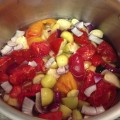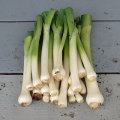[stub]
Botanical Information
Taxonomy
History
Physical Description
Varieties & Cultivars
Categories or Types of Chiles
Colors Available
Varieties (link to ../category/cultivars/tag/Chiles)
Growth Requirements
Climate & Temperature Requirements
Air Temperature
Soil Temperature
Humidity
Day Length or Light Requirements
Site Conditions Favored
Soil Requirements
Soil Texture
pH
Nutrient Requirements
Propagation
Methods of propagation
Seed
Division
Cuttings
Transplanting or Potting Up
Seed Saving
Planting Out
Bed Prep & Soil Amendments
Bed Spacing
Row Spacing
Planting Depth
Alternative Bed Methods
Container Gardening
Routine Cultivation & Maintenance
Water Requirements
Fertilization Recommendations
Mulching & Weeding
Pinching or Pruning & Dividing
Support
Winterizing
Companion Planting
Helpful Companions
Harmful Companions
Companion to..
Pests, Diseases & Problems
Common Pests
Common Diseases
Symptoms
Whole Plant
Leaves
Stem/Trunk
Flowers
Fruit
Roots
Harvesting & Storage
Edible Parts of the Plant
Yield
Days to Harvest / Harvest Timing
- Hot peppers are ready for harvest when they become bright red VG
Harvest Methods
- Cut them from the plant and hang them up, if drying VG
Storage of harvest
Fresh
Canned
Frozen
Pickled
Dried
Cooking with Chiles
About the Heat in Chiles…
There’s no general rule as to which chile is hotter or less hot than another chile. Typically jalapeno types are less hot than serrano, which are less hot than habanero types, but I have had jalapenos that were hotter than some serranos…although I can’t think of a habanero that wasn’t hotter than the other two… 🙂 But really, even within the same variety, even when they come from the same plant (!), they can be varying degrees of hotness.
The heat-causing compounds, capsaicinoids (capsaicin, dihydrocapsaicin, etc), are at the highest concentrations in the pith of the pepper. These are the whitish ribs which hold on to the seeds. Seeds hold the second highest concentration, and the flesh of the pepper has the lowest amount of capsaicin compounds. To control the amount of heat in your cooking, remove the pith and seeds to be conservative.
As far as growing hot chiles, it seems that stress increases the amount of capsaicin a plant produces. This means that chiles grown in dry, hot conditions should result in hotter peppers. I am not sure as to how the ripeness affects the heat level, but do know that the riper the chile, the more developed the sugars are, so I usually like the taste of them better when ripe. Some people don’t pick them until they “cork”, which is when little cracks develop longitudinally on the pepper, thinking they are hotter at this point, but Cooks Illustrated did some testing on this theory and couldn’t back up the hypothesis.
Cooling the Heat in Chiles…
If you’ve gone too far in the hot zone, the only thing that will bring down the heat level is to add fat. Sour cream, milk, oil, or cheese will bring it down. This goes for your mouth, too. Water & beer or alcohol will increase the sensation; and sugar, salt, are all not effective.
If you’ve got the burn going on your hands, definitely don’t rub your eyes! Right when you are done chopping or preparing the peppers, wash hands with hot water & lots of good grease-cutting soap. I then pour some oil on my hands and rub it in well. Add soap to the oil on your hands and rub it all in again, then rinse. Apparently rubbing alcohol or hydrogen peroxide also work. Haven’t tried those, though.
Nutritional Benefits & Values
Toxicity
Cooking
Preparation
Cooking Methods
Recipes (link to …/category/recipes/tag/Chiles)
Resources
Information for this article was taken from these sources. (link to …/category/resources/tag/Chiles)



